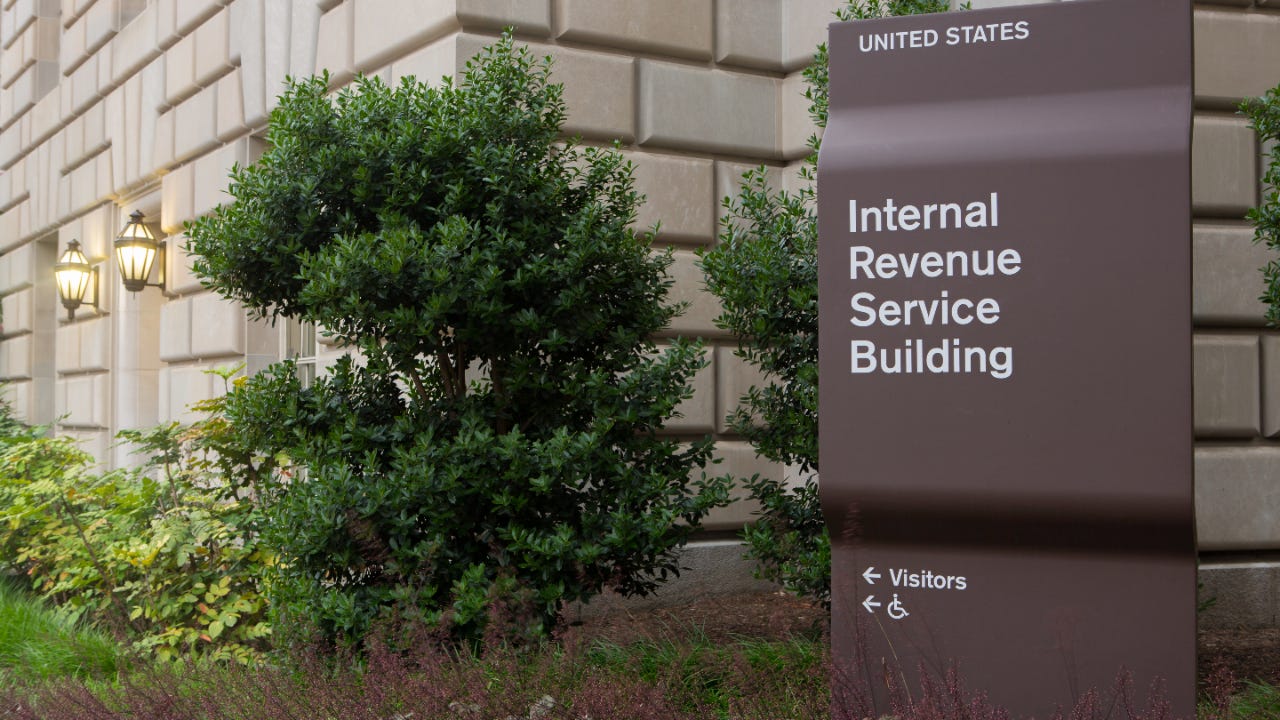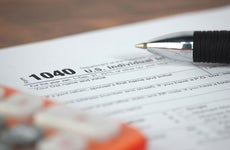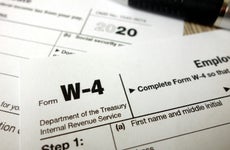What is an underpayment penalty? Definition and examples

The Bankrate promise
At Bankrate we strive to help you make smarter financial decisions. While we adhere to strict , this post may contain references to products from our partners. Here's an explanation for .
Regardless of whether you are a freelancer or salaried employee, you are responsible for taxes based on your income. Generally speaking, anyone earning more than the standard deduction for their tax-filing status should file.
Salaried and hourly employees, or those who receive a W-2, typically have taxes deducted from their paychecks. Anyone who is self-employed, receives a 1099 or who invoices their customers/clients must send in estimated tax payments each quarter. However, there are times when someone may not have paid enough toward taxes and find out during tax filing season when it is too late. The IRS levies an underpayment penalty when such a situation arises.
Underpayment penalty definition
The IRS charges a taxpayer an underpayment penalty when they do not pay enough toward their tax obligation throughout the year.
How underpayment penalties work
The U.S. tax system requires individuals to pay their taxes throughout the year. Most individuals pay taxes regularly through payroll tax withholding or by making quarterly payments.
It is the responsibility of each taxpayer to determine how much they should pay to make sure their tax liability is covered and they are not subject to an underpayment penalty. There are tools available to ensure a taxpayer is paying enough. The IRS has a tax-withholding estimator tool that helps you determine how much you should pay. Or you could pay the same amount of last year’s tax obligation or 90 percent of the current year’s income tax obligation. Keep in mind that certain high-income taxpayers, farmers and fishermen have special rules.
Most taxpayers can avoid an underpayment penalty if they paid at least 90 percent of the taxes due or owe less than $1,000 after filing. It gets more complicated when you do not receive a steady income throughout the year. If you get paid seasonally, or have high and low months, the IRS suggests annualizing your income by adding up how much you earn over one year, dividing it by twelve and paying tax based on the monthly average calculated.
If you did underpay, you will find out during tax-filing time if a tax professional files your taxes. Otherwise, the IRS will send you a letter detailing your underpayment and how much you owe.
How to calculate underpayment penalty
If you file your taxes and find that you paid less than what you owed, you will need to use Form 1040, 1040A or Form 2210 to determine the underpayment amount. An underpayment penalty is calculated based on:
- The underpayment amount.
- The time frame from when the underpayment was due.
- The interest rate for the underpayment penalty, starting on the due date taxes were owed. Interest rates are subject to change quarterly. The current underpayment penalty interest rate is the federal short-term rate plus three percentage points.
Certain taxpayers may qualify for an exception and avoid the underpayment penalty. The IRS may waive the underpayment penalty for the following scenarios as long as you can prove it was a reasonable cause and not due to willful neglect on your part:
- You retired (after reaching age 62) during the tax year in which the underpayment was made.
- You were unable to make enough payments because of an unforeseen circumstance, emergency, casualty or a natural disaster, such as the coronavirus pandemic.
- You became disabled during the tax year and as a consequence, did not meet enough of your tax obligation.
- Most of the income tax you paid was withheld early in the year.
Underpayment penalty example
Say that you did not estimate your quarterly taxes correctly or you claimed too many deductions on your W-4, underpaying taxes for the year. The first thing you can do is to submit a new W-4 to your employer with fewer deductions so you cover your tax liability for the following year. In the meantime, here is what happens when you underpay taxes, using the example of someone who files quarterly estimated payments.
While filing taxes, your accountant determines that you made the following quarterly payments:
- April 15: $2,000 (100 percent of the estimated tax due)
- June 15: $2,000 (100 percent of the estimated tax due)
- September 15: $2,000 (100 percent of the estimated tax due)
- January 18 of the following year: $500 (estimated tax due was $2.000)
Your accountant determines that you underpaid your taxes by $1,500. Unfortunately, you missed the IRS underpayment threshold of $1,000 and are now subject to an underpayment penalty. In addition, you did not have a reasonable excuse to request a waiver, such as disability, early retirement or an unforeseen circumstance.
You could wait until after you file taxes for the IRS to send you a letter detailing the amount of the underpayment. However, the interest due started accruing on Jan. 18, the date the taxes were due. Waiting another month or so for a letter from the IRS adds to the interest you will owe. If the underpayment amount is nominal, it may be the most foolproof way to meet your tax obligation. But if your underpayment is substantial, an extra 3 percent in penalties could be significant.
You choose to calculate the estimated underpayment penalty to pay it right away. Your accountant uses Form 2210 to determine the penalty amount. Since you are filing taxes at the end of January, the underpayment is for less than one month. Your accountant calculates:
- The federal short-term rate for the quarter, which is 14 percent for January
- Adds 3 percent to that rate
Since you underpaid $1,500 you make a tax payment for the amount past due plus 3.14 percent as an underpayment penalty for a total of $1,547.10.
Related Articles




Tax withholding definition: When and how to adjust your IRS tax withholding